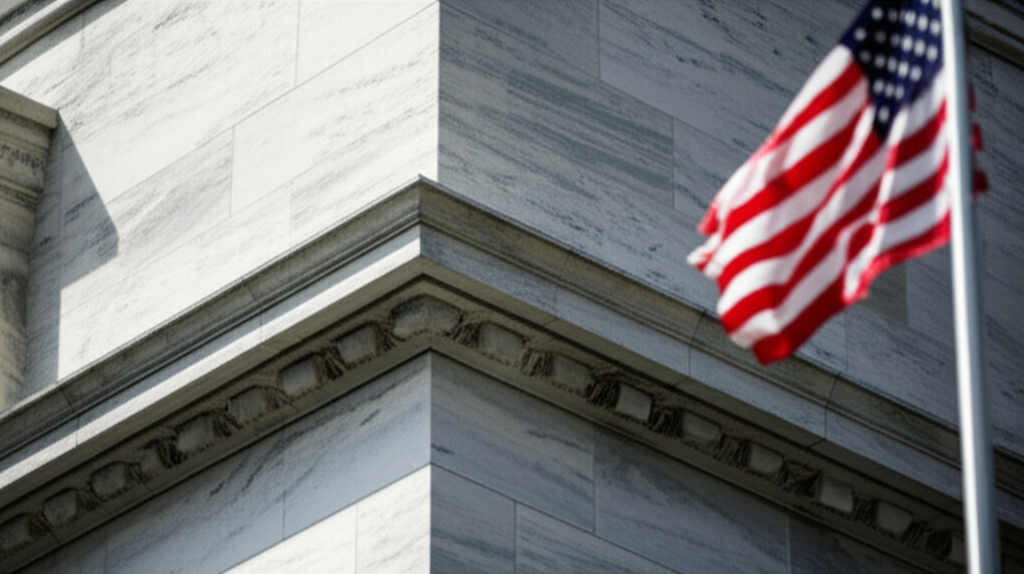FOMC Meeting Preview: Will the Fed Leave the Door Open for a July Cut?
As the Federal Reserve’s Federal Open Market Committee (FOMC) convenes for its highly anticipated meeting, market watchers and everyday Americans alike are bracing for critical insights into the future of U.S. monetary policy. The overarching question on everyone’s mind isn’t whether interest rates will change this time – a hold is widely expected – but rather, will the Fed signal a potential rate cut as early as July? This meeting comes at a pivotal moment, with economic data sending mixed signals and the path to inflation deceleration appearing less straightforward than previously hoped. Understanding the nuances of the Fed’s communication from this gathering will be key to deciphering the economic landscape for the latter half of the year.
The backdrop to this FOMC meeting is a complex tapestry of economic indicators. On the one hand, the U.S. labor market remains remarkably resilient, defying predictions of a significant slowdown. Job growth continues at a steady clip, and the unemployment rate, while seeing minor fluctuations, is still at historically low levels. This robust employment picture offers a cushion for the economy, suggesting that the Fed might not feel immediate pressure to ease policy to support job creation. However, recent inflation data has proven more stubborn than policymakers or investors would prefer. After a period of encouraging disinflation, the Consumer Price Index (CPI) and Personal Consumption Expenditures (PCE) readings have shown inflation moderating at a slower pace, prompting concerns that the journey back to the Fed’s 2% target could be protracted. Services inflation, in particular, remains elevated, partly fueled by strong wage growth in some sectors. Furthermore, while economic growth remains positive, there are signs of a gradual cooling, with some sectors experiencing headwinds from higher interest rates. Consumer spending, a critical driver of the U.S. economy, has shown resilience but faces the cumulative impact of elevated borrowing costs.
Against this backdrop, the Federal Reserve faces a delicate balancing act. For months, the central bank has maintained a “higher for longer” stance, emphasizing data dependency and a commitment to ensuring inflation is firmly on a path to 2% before considering rate cuts. Fed Chair Jerome Powell has repeatedly stressed the importance of not easing policy prematurely, a lesson learned from past inflationary battles. So, what would it take for the Fed to even hint at a July cut, or at least “leave the door open”? It would likely require a significant shift in their assessment of the economic outlook. This could manifest through a clearer acknowledgment of disinflationary progress, perhaps a subtle shift in language regarding the “restrictive” nature of current policy, or a greater emphasis on the risks to achieving their dual mandate, which includes both price stability and maximum employment. Markets have often priced in more aggressive rate cuts than the Fed has delivered, creating a persistent tension between investor expectations and official guidance. This time, after some recent inflationary prints have pushed back earlier cut expectations, the market’s focus has narrowed to how quickly (or slowly) the Fed might pivot.
The most likely outcome of the meeting is that the Fed will maintain the federal funds rate at its current level. The real drama will unfold in the accompanying statement and, more crucially, during Chair Powell’s press conference. Investors will meticulously dissect every word for clues. A “dovish hold” would involve the Fed acknowledging improvements in inflation while perhaps tempering their hawkish rhetoric or even hinting at a conditional readiness to cut rates later in the year if data permits. Such a scenario might involve acknowledging the cumulative impact of past rate hikes and their effect on economic activity. Conversely, a “hawkish hold” would see the Fed reaffirming its commitment to fighting inflation aggressively, reiterating that current policy may need to remain restrictive for longer, and downplaying any immediate need for rate cuts. This would likely emphasize the stickiness of inflation and the strength of the labor market, suggesting they see little urgency to ease policy. Should the Fed choose the latter path, it would signal that the path to rate normalization is likely to be slower than many anticipate, pushing back the timeline for any potential cuts well beyond the summer. The implications of this meeting extend beyond mere financial markets; they impact everything from mortgage rates and borrowing costs for businesses to the everyday purchasing power of your dollar. Staying informed about the Fed’s signals is crucial for anyone navigating the current economic environment.





